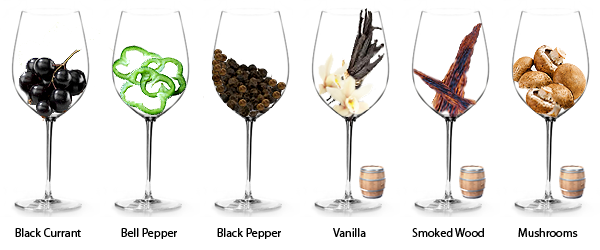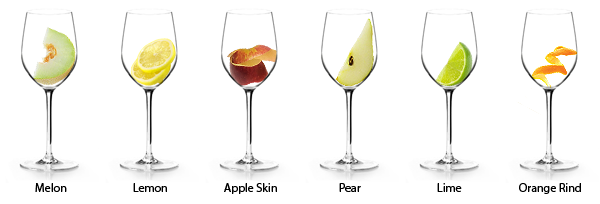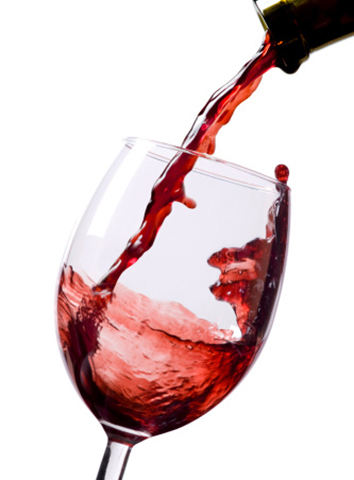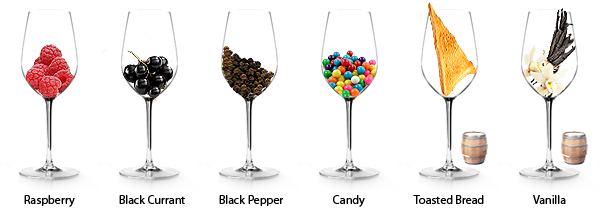Beauty comes in many forms. It might be a question of measurable symmetry or a juxtaposition of opposites – ruggedly handsome, heroin chic – but the origin of physical beauty is set firmly in the eye of the beholder. In wine, beauty is most often equated with aroma and balance: a beautiful bouquet, a beautiful wine.
Though appearances are important, they regularly take a back seat to aromas as the trigger for physical contact with a subject. In this case, the subject happens to be a glass of wine.
In part one of this series, I touched on visual cues that can be found in wine.
Here, we are going to look at aromas and the palate – the way a wine smells and tastes – as we develop our own organized method of tasting (OMT). Before we get too far ahead, you should have a proper glass of wine in your hand, and maybe something to spit into.
Raising the glass in front of you, swirl the wine. Swirling the wine helps to capture the wine’s aromas in the glass. Now, very gently, put your nose over opening and smell. This is the essence of the wine.

This first sniff gives us an understanding of the health of the wine. In other words, does it smell like fruit and naturally occurring plants, or does it smell medicinal, or chemical. A healthy wine will smell like fruit juice with some alcohol. Now that you have a snapshot of the aromas, swirl the wine again and put your nose over the glass, focusing on the kinds of fruits or plants that you smell: types of citrus, tree fruits, brambleberries, vegetables, grasses, types of flowers, green wood or charred wood. Finally, would you drink this?

If you answered yes, go for it. (If you answered no, make a note of the wine and then don’t buy it again. Life is too short to drink bad wine.) While bringing the wine glass to your lips, take a gentle smell and then a small sip. Swish the wine around your mouth to the count of three and then spit it out, exhaling gently through your nose. Don’t worry too much about the way this looks. Even the professionals spit and drool. The point of smelling, swishing, and spitting is to give the aromas and flavors of the wine a chance to merge in the olfactory loop of your nose, retro-nasal passage, and mouth, without getting you drunk.
Sometimes, as in love, everything about the experience aligns. Sometimes you have to pour it down the drain and move on.

There are other elements of the palate that we could focus on – acidity, tannins, body, and length – but essentially what we are looking for are the answers to a few questions: Is the wine balanced – or awkward? Does the wine have intensity – is it alive? Is the wine complex – or is it boring? Does it have the best qualities of similar wines?
There are no fixed answers, mostly because everyone’s palate and preferences are different. What’s important is that each one of us becomes tuned in to what the wine behind the label. The more wines we taste, the more we are able to speak with authority about the ways a wine adheres to or detours from “the norm.”
To better understand what I’m getting at, arrange a tasting among friends. Pick up three wines made from any single grape variety, the same vintage, the same price point, but from three different wine regions: i.e. Three $12 bottles of 2013 Pinot Noir; one from France; one from California; and one from Australia.
Open all three bottles and pour a little of each wine into three different glasses.

Using the methods for visual assessment, from part one of this series, and the aroma and palate cues above, examine the colors, aromas and flavors of each wine. Using your own treasure chest of memories – fruits, vegetables, candies, pastries, nature, chemical, etc – write down what you see, smell, taste, and think about each wine. Then ask yourself if the wine is balanced, intense, and complex.
When you’re all done with the three wines, compare your notes.
The best wines not only taste like they smell, but you may find similarities in their appearance. This is because most wines are made in ways that enhance their finest qualities. Professionals have their preferences, but there’s one thing we can all agree on. Once you experience real beauty you’re not likely to forget it.




Pingback: How To Taste Wine Like a Pro – Part 2 | AMERICAN WINE WRITER